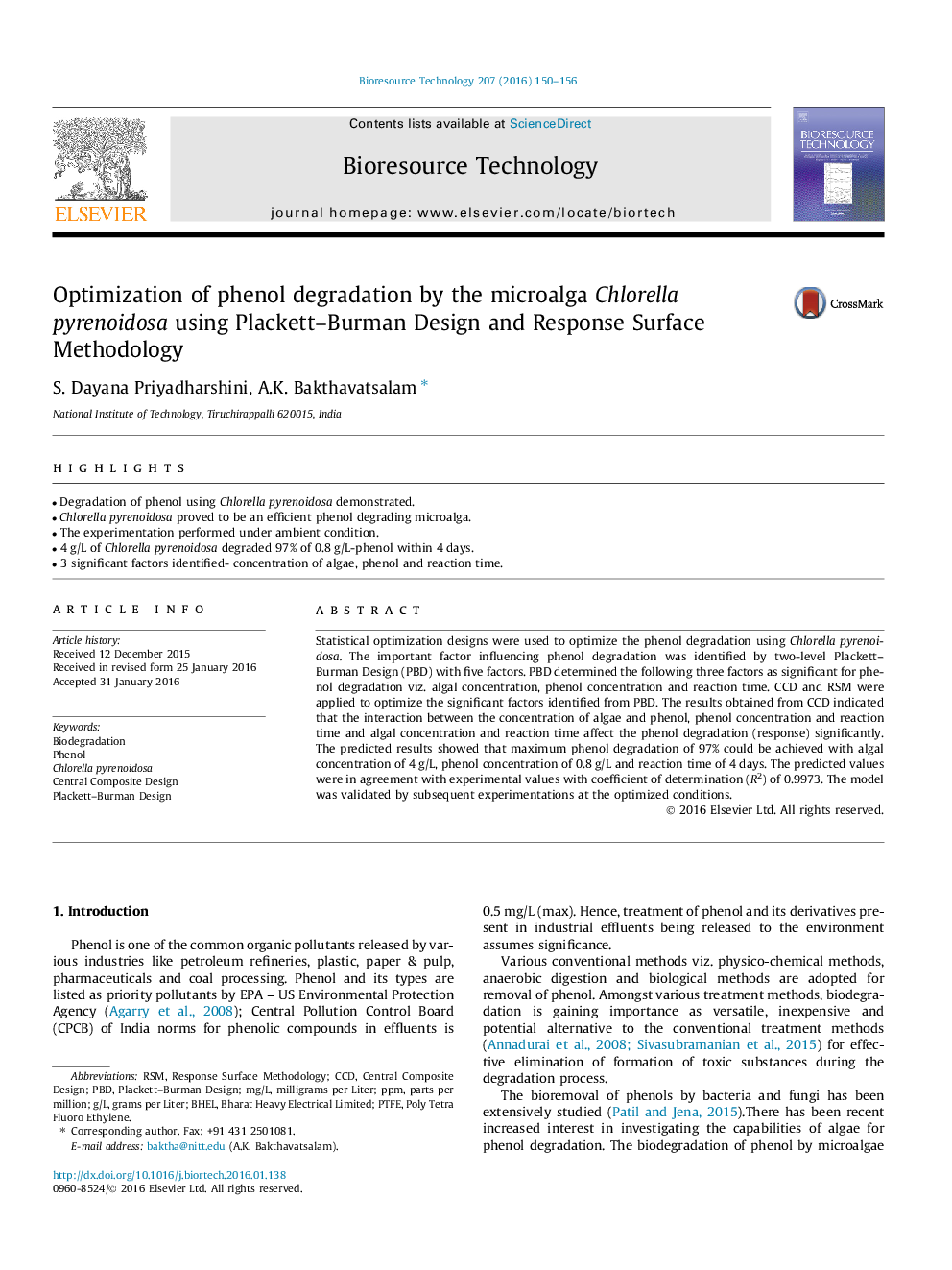| Article ID | Journal | Published Year | Pages | File Type |
|---|---|---|---|---|
| 7072107 | Bioresource Technology | 2016 | 7 Pages |
Abstract
Statistical optimization designs were used to optimize the phenol degradation using Chlorella pyrenoidosa. The important factor influencing phenol degradation was identified by two-level Plackett-Burman Design (PBD) with five factors. PBD determined the following three factors as significant for phenol degradation viz. algal concentration, phenol concentration and reaction time. CCD and RSM were applied to optimize the significant factors identified from PBD. The results obtained from CCD indicated that the interaction between the concentration of algae and phenol, phenol concentration and reaction time and algal concentration and reaction time affect the phenol degradation (response) significantly. The predicted results showed that maximum phenol degradation of 97% could be achieved with algal concentration of 4Â g/L, phenol concentration of 0.8Â g/L and reaction time of 4Â days. The predicted values were in agreement with experimental values with coefficient of determination (R2) of 0.9973. The model was validated by subsequent experimentations at the optimized conditions.
Keywords
Related Topics
Physical Sciences and Engineering
Chemical Engineering
Process Chemistry and Technology
Authors
S. Dayana Priyadharshini, A.K. Bakthavatsalam,
